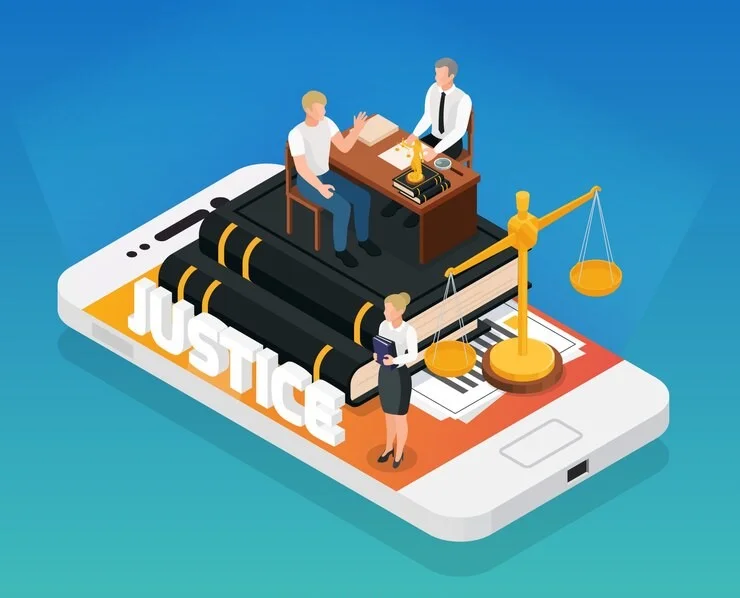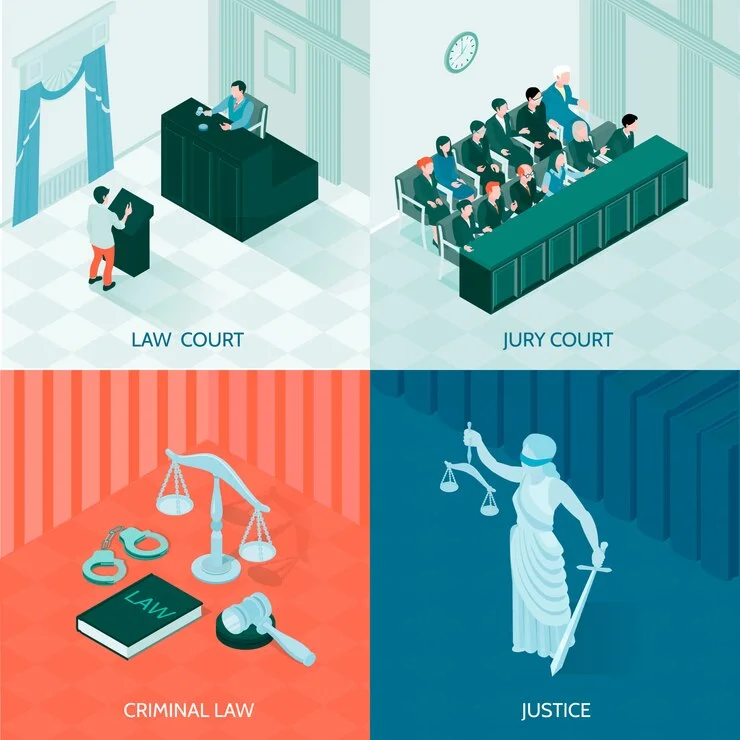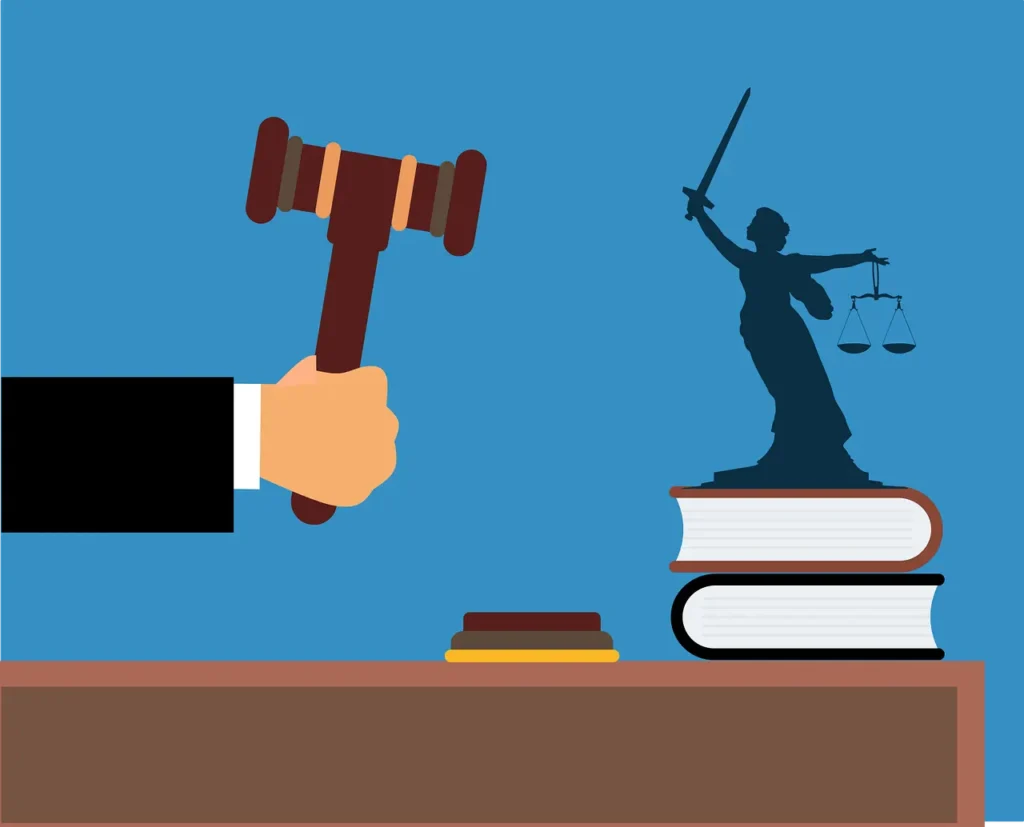Introduction to Virtual Courts:

Virtual court represent a significant innovation in the judicial system, offering a digital alternative to traditional court proceedings. These are designed to facilitate disposal of cases online, eliminating the need for litigants, lawyers and judges to be physically present in the courtroom. The concept has gained popularity as it promises to increase access to justice by making legal processes more efficient and cost-effective. Virtual courts operate through an online environment where case filings, hearings and decisions can be conducted electronically.
Understanding Virtual Court
What are Virtual Courts?
Virtual Court is a modern innovation within the judicial system, designed to facilitate the adjudication of cases through digital means. This concept allows legal proceedings to be conducted online, without the need for physical presence in the courtroom. The primary objective of virtual courts is to streamline the legal process, making it more accessible and efficient for all parties involved. The operation of virtual courts includes various online services that enable individuals to file cases, pay fines and check the status of their legal cases through a centralized digital platform.
However, the implementation of virtual courts also involves challenges, such as ensuring equitable access to technology and protecting the privacy and security of legal proceedings.
How do virtual court work?

1. E-filing and initiation of case:
Litigants have the ability to file their complaints electronically through e-filing platforms on virtual courts, which is a significant advancement in the judicial process. This system allows a more efficient and accessible way to initiate legal proceedings. Here’s how it typically works:
- Registration: Litigants must first register on the e-filing portal by creating an account with their personal details.
- Filing Complaints: They can then lodge their complaints by filling an online form and uploading the required documents.
- Payment of Fees: Court fees related to the complaint can be paid online through the platform.
- Case Tracking: Case status can be tracked online, providing transparency and convenience.
- Virtual Hearing: Depending on the case, litigants may be required to attend the hearing virtually.
Payment of court fees or fines can be made online, streamlining the process.

Paying court fees or fines online in Virtual Court is a straightforward process that can be completed in a few steps:
Visit the Virtual Court Portal: Access the official Virtual Court website.
Select your state and department: Select the appropriate state and department from the given options.
Proceed with Payment: Click on the ‘Proceed Now’ button to proceed with the payment process.
Enter details: Enter the required information such as case number, challan number or vehicle number depending on the type of fine or fee you are paying.
Use the available payment options to complete the transaction. The system may offer various methods including credit/debit cards, net banking or digital wallets.
Confirmation: Once payment has been made, you will receive a confirmation that will act as proof of payment.
The system is designed to reduce the physical presence required in courts and make the payment process more efficient and accessible.
2. Decision of the Case:
- Virtual Court Website:
- Litigants can visit the official Virtual Court website to get information related to the case.
- Various channels have been created for service delivery, allowing litigants to view the status of their cases.
- Case Status Search:
- can search for case status using various identifiers:
- Mobile Number: By entering your registered mobile number.
- CNR (Case Number Record): Using the unique alphanumeric CNR number associated with the case.
- Party Name: Searching by name of the parties involved.
- Challan/Vehicle Number: For traffic and transportation challans.
- Immediate Settlement:
- Virtual courts enable online adjudication of cases, especially for traffic and transport challans on a pilot basis.
- The system automatically consumes challans from the e-challan system and allows users to pay fines for traffic offenses online.
- The case proceedings are completed online and the case is disposed of immediately after online payment of fine.
- This reduces the physical presence of litigants and judges in courts, reduces pendency of cases and improves cost efficiency.
Judges hold hearings, review evidence and render decisions through virtual interfaces.

The transition to virtual interfaces for judicial proceedings has been a significant development in the legal system. It has become increasingly common for judges to hold hearings, review evidence, and render judgments via virtual platforms, particularly in response to the need to maintain judicial functions during disruptions such as the COVID-19 pandemic. Here’s an overview of how the process works:
- Virtual hearings: Judges hold hearings via video conferencing tools, allowing all parties to participate remotely. This may include presenting arguments, examining witnesses, and engaging in legal discussion.
- Review of Evidence: Evidence is submitted electronically, and the judge reviews it through a digital system. This can include documents, photographs, and even digital recreations of scenes or events.
- Giving Judgment: The judge gives his decision after considering the arguments and evidence. These can be communicated during the virtual hearing or provided in writing later through the court’s electronic system.
Virtual courts can improve access to justice and the efficiency of judicial institutions. They also ensure the safety and well-being of all participants, which is especially important for vulnerable groups such as victims and witnesses.
3. Traffic and Transportation Challan:
On a pilot basis, virtual courts handle traffic and transport challans, which is an important step towards modernization of legal proceedings. Here’s how this innovative approach works:
- Introduction to Virtual Court:
- Virtual courts are digital platforms that conduct legal proceedings online, eliminating the need for physical presence in a traditional courtroom. The objective of these courts is to increase efficiency, reduce costs and speed up case resolution.
- Traffic and Transportation Challan:
- Virtual courts, on a pilot basis, handle traffic and transport challans.
- The system automatically consumes challans from the e-challan system and allows users to pay fines for traffic offenses online.
- The case proceedings are completed online and the case is disposed of immediately after online payment of fine.
3. Benefits:
- Efficiency: Virtual courts expedite case resolution, reduce backlog.
- Cost-effectiveness: Reduction in infrastructure costs and streamlined processes.
- Transparency: Litigants can view challan details online.
In short, virtual courts handling traffic and transport challans provide a more accessible, efficient and transparent way to address legal matters. The system automatically integrates eChallan data and allows online fine payment.
Benefits of Virtual Court:

- Accessibility and Convenience:
- Litigants can participate from anywhere, reducing travel time and costs.
- Lawyers can manage multiple cases without geographical constraints.
- Reduction in pending cases:
- Virtual courts speed up resolution of cases, reduce backlog.
- Swift action results in timely justice.
- Cost efficiency:
- Reduction in infrastructure costs (courtroom, security, etc.).
- Litigants save time and expense associated with physical appearances.
- Transparency and Accountability:
- Online records ensure transparency and prevent tampering.
- Having proceedings digitally documented increases accountability.
Future Prospects:
1. Extension to other case categories:
Apart from traffic challans, virtual courts can also handle civil, criminal, and family law cases.
Virtual courts handle traffic and transport challans, which is an important step towards modernization of legal proceedings. Here’s how this innovative approach works:
- Introduction to Virtual Court:
Virtual courts are digital platforms that conduct legal proceedings online, eliminating the need for physical presence in a traditional courtroom.
The objective of these courts is to increase efficiency, reduce costs and speed up case resolution.
- Traffic and Transportation Challan:
Virtual courts, handle traffic and transport challans.
The system automatically consumes challans from the e-challan system and allows users to pay fines for traffic offenses online.
The case proceedings are completed online and the case is disposed of immediately after online payment of fine.
- Efficiency: Virtual courts expedite case resolution, reduce backlog.
- Cost-effectiveness: Reduction in infrastructure costs and streamlined processes.
- Transparency: Litigants can view challan details online.
In short, virtual courts handling traffic and transport challans provide a more accessible, efficient and transparent way to address legal matters.
Integration with existing legal databases and systems.
Integration of virtual courts with existing legal databases and systems is an important aspect of modernizing the judiciary and increasing the efficiency of legal processes. Here’s how the judicial system could benefit from such integration:
- Uninterrupted access to case information.
- Efficient Case Management.
- Data Consistency and Accuracy.
- Advanced Collaboration.
- Better Legal Research.
- Streamlined Evidence Presentation.
- Public access to legal information.
- Statistical Analysis and Reporting.
2. Global Adoption:
Countries around the world are exploring virtual courts.
Countries around the world are actively exploring the implementation of virtual courts as a means of modernizing their judicial systems and improving access to justice. The global shift towards virtual courts has been accelerated by the COVID-19 pandemic, necessitating the adoption of remote technologies to keep the wheels of justice turning. In the wake of the pandemic, countries like South Africa and Uganda have adopted platforms like Zoom for judicial proceedings, while New Zealand has used Microsoft Teams to conduct virtual court sessions.
Learning from successful implementation and resolving challenges.
Learning from successes:
- Best Practices: Identifying and analyzing successful virtual court implementations allows best practices to be extracted that can be replicated or adapted in other jurisdictions.
- Technology adoption: Understanding which technologies have been effective in different settings helps make informed decisions about investment and training.
- Policy Development: Success stories provide valuable insights into the policy framework that supports the effective operation of virtual courts.
Resolving Challenges:
- Technical Issues: Addresses common technical issues such as connectivity and compatibility, ensuring seamless virtual proceedings.
- Access to justice: Developing strategies to overcome barriers to technology access, such as providing devices or Internet access to disadvantaged parties, is essential.
- Training and support: Implementing comprehensive training programs for all users of virtual courts, including judges, lawyers, and litigants, increases familiarity and comfort with the system.
- Legal frameworks: It is important to update the legal framework to accommodate virtual proceedings while protecting rights and ensuring a fair trial.
Final Verdict:

Virtual courts represent a transformative innovation in the legal landscape, providing a digital alternative to traditional courtroom settings. This shift toward virtual proceedings has been driven by the need for an adaptable and flexible justice system, especially evident during the global pandemic. By enabling hearings, evidence review and decision making through online platforms, virtual courts have demonstrated their ability to increase access to justice, reduce case backlogs and save time and resources for all parties involved.
You may visit our more blogs on Sci-Fi Spectra.
Frequently Asked Questions:
Yes, receipt is issued immediately on successful payment. You can download or print it.
Visit the Virtual Court website and follow the instructions given in the SMS.
Yes, you can request to contest the case, and it will be transferred to the court.
To correct the phone number, contact the concerned authorities and proceed accordingly
Yes, you can usually re-download the receipt from the Virtual Court website.
Some Other Recommendations:

Apple iPhone SE 4: Release Date, Price, & Specs (Feb 2025)
Many smartphone users love small designs. That’s why the iphone se

DeepSeek AI: 5 Major Safety Risks Revealed by Anthropic CEO
DeepSeek AI’s 5 major safety risks are revealed by the Anthropic CEO. Learn about the key challenges and solutions in AI safety.

Elon Musk’s DOGE Gets Treasury Access — 5 Shocking Risks
Imagine waking up to news that could change how your
Intel Receives $2.2B Grant for Chip Production Boost
Imagine a world where technology depends on tiny microchips. The

Oppo Find X8 & X8 Pro: Powerful Flagships to Buy in 2024
Oppo Find X8 16 GB RAM + 512 GB

Best Online Multiplayer Games of 2024 – Epic Fun!
Introduction to Best Online Multiplayer Games Image by FreePik Visit
